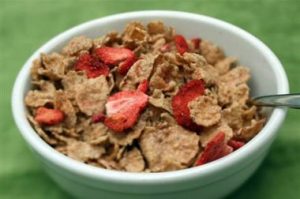You might have noticed something strange on days when it’s really, really cold and sunny – snow looks like it’s disappearing. The snow isn’t melting, it’s too cold for that, but you know the snow pile is disappearing. The disappearance is due to a phenomenon known as sublimation – when a solid goes directly to a gas without passing through the liquid state. You have probably observed this happening if you have seen dry ice giving off an eerie-looking cloud of ‘steam’, or the ice cubes in your freezer look as if they are shrinking over time (they are!).
The food processing industry takes advantage of the process of sublimation in the manufacture of freeze-dried food. Whereas we used to think of freeze-dried foods exclusively as camping foods or foods for astronauts, some companies are now manufacturing high-end snack foods that are freeze dried (mostly vegetables or fruits) and companies are adding freeze-dried fruits to breakfast cereals. While freezing drying is a relatively expensive food preservation technology, the end result is seen as a high quality product, far more so that a traditional product dried with heat. Depending on how old you are, you may remember TV commercials by coffee companies such as Nescafe and Folgers in which brewed coffee was replaced with instant coffee at fine restaurants and patrons supposedly could not tell the difference. Sachets such as Starbucks VIA coffees contain freeze dried coffee mixed with ‘regular’ ground coffee beans to enhance flavor.
So how is freeze-dried food made? First, the food product is frozen so that water freezes . This frozen product is placed on trays in a closed chamber. A very small amount of heat is applied directly to the trays to accelerate the process and a pump works to drop the air pressure in the chamber. As the pressure drops, ‘water’ in the food moves directly from the solid (ice) to the gaseous phase; and the gas is pumped from the chamber. Vitamins and minerals, proteins, carbohydrates and fats are left unaffected by the process. Because the food is never heated, the vitamin content of freeze-dried food is high. However, because freeze-dried food is never heated or cooked, harmful microbes may survive the freeze-drying process. As a result, freeze-dried foods like meats should be cooked thoroughly before eating. As always, stay warm and food-safe, Barb




